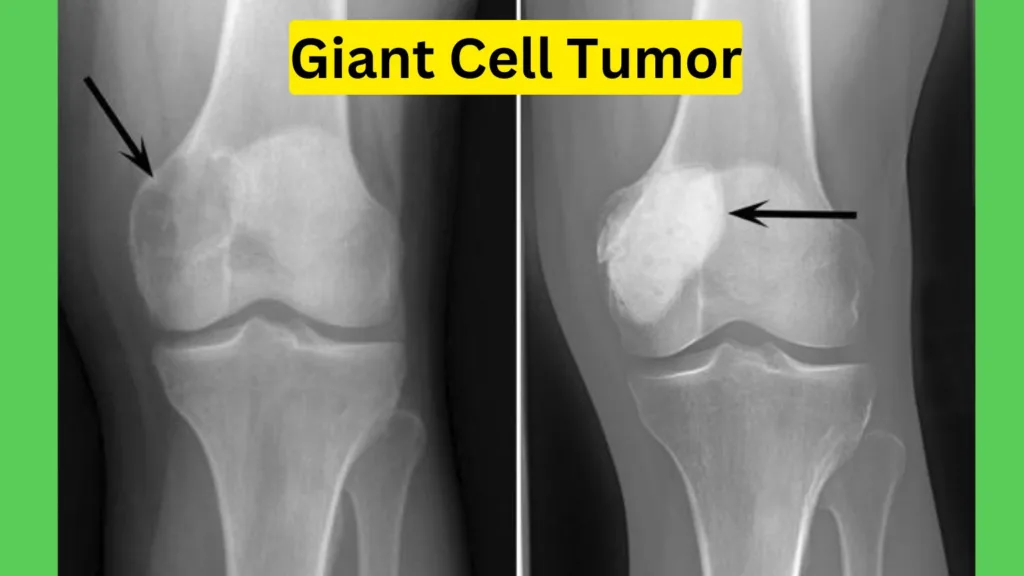Giant Cell Tumor Precautions should be apply carefully to the life of the patient and everyone who want to precautionary knowledge of GCT.
Giant Cell Tumor Precautions
Table of Contents
Giant Cell Tumors (GCT) are aggressive bone tumors commonly found in young adults. While treatment options exist, taking precautions is essential to manage the condition effectively and improve outcomes.
Understanding Giant Cell Tumors
What are Giant Cell Tumors?
Giant Cell Tumors are bone tumors characterized by the presence of multinucleated giant cells. These tumors typically occur in the epiphysis of long bones, such as the distal femur, proximal tibia, and distal radius.
Causes and Risk Factors
The exact cause of Giant Cell Tumor is unknown. However, factors such as genetics, trauma, and hormonal imbalances may contribute to their development. Certain risk factors, including age and gender, may also increase the likelihood of developing GCT.
Precautions for Individuals with Giant Cell Tumors
1. Regular Medical Check-ups
Regular follow-up appointments with a healthcare provider are crucial for monitoring the progression of the tumor and evaluating the effectiveness of treatment.
2. Adherence to Treatment Plan
Following the recommended treatment plan, which may include homeopathic treatment, surgery, radiation therapy, or chemotherapy, is essential for managing GCT and reducing the risk of recurrence.
3. Activity Modification
Depending on the location and extent of the tumor, individuals may need to modify their physical activities to prevent further damage to the affected area. Avoiding activities that put excessive stress on the bone or joint is advisable.
4. Protective Gear
For individuals participating in activities that may increase the risk of injury to the affected area, wearing protective gear such as braces or padding can help minimize the risk of trauma.
5. Healthy Lifestyle
Maintaining a healthy lifestyle with a balanced diet, regular exercise, and avoiding tobacco and excessive alcohol consumption can support overall well-being and aid in the recovery process.
6. Bone Health
Ensuring adequate intake of calcium and vitamin D is essential for maintaining bone strength and density, especially for individuals with Giant Cell Tumors who may be at increased risk of bone-related complications.
7. Early Detection
Being vigilant about any changes or symptoms associated with the tumor, such as persistent pain or swelling, can help in early detection and prompt intervention.
8. Emotional Support
Dealing with a diagnosis of Giant Cell Tumor can be emotionally challenging. Seeking support from friends, family, or mental health professionals can help cope with any anxiety, stress, or depression.
9. Follow-up Imaging
Even after successful treatment, regular imaging studies may be necessary to monitor for any signs of recurrence or progression of the tumor.
10. Education and Advocacy
Educating oneself about Giant Cell Tumor, including their causes, symptoms, treatment options, and prognosis, empowers individuals to actively participate in their treatment decisions and advocate for their health needs.
Conclusion
Taking precautions is vital for individuals diagnosed with or at risk of developing Giant Cell Tumor. By following these precautions, individuals can better manage their condition and improve their quality of life.
FAQs
- How common are Giant Cell Tumors?
Ans. Giant cell tumors are relatively uncommon, accounting for only about 5% of all primary bone tumors. They primarily affect young adults between the ages of 20 and 40, with a slight predilection for females. While they can occur in any bone, they most commonly develop in the long bones near the knee joint, such as the distal femur or proximal tibia.
2. Can Giant Cell Tumors spread to other parts of the body?
Ans. Giant cell tumors (GCTs) are typically benign tumors that originate in the bone, and they do not tend to metastasize or spread to other parts of the body like malignant cancers. However, in rare cases, giant cell tumors can recur locally after initial treatment, meaning they can come back in the same area where they were first diagnosed and treated.
Although giant cell tumors are considered benign, they can still be locally aggressive, meaning they can grow and invade nearby tissues, causing damage to the surrounding bone. In some instances, if left untreated or inadequately treated, giant cell tumor can extend into nearby joints or soft tissues, leading to functional impairment and complications.
While the primary concern with giant cell tumor is typically their local growth and impact on nearby structures, it’s essential for individuals diagnosed with GCTs to undergo regular medical monitoring to detect any signs of recurrence or progression. This typically involves periodic imaging studies, such as X-rays or MRI scans, to assess the status of the tumor and surrounding tissues.
Overall, while giant cell tumors do not metastasize to distant organs like malignant cancers, they can still have significant local effects and may require appropriate management to prevent complications and preserve function. Early detection, appropriate treatment, and ongoing medical surveillance are key aspects of managing giant cell tumors effectively.
3. Is surgery the only treatment for Giant Cell Tumors?
Ans. Surgery is not the only treatment option for giant cell tumors (GCTs). Some other options are available like Homeopathy, Herbal remedies, Radiation etc.
4. Are Giant Cell Tumors cancerous?
Ans. Giant cell tumors (GCTs) are generally considered benign tumors, meaning they are not cancerous. However, despite being classified as benign, giant cell tumors can be locally aggressive, meaning they have the potential to grow and invade surrounding tissues, causing damage to nearby bones and joints.
While giant cell tumors do not metastasize or spread to other parts of the body like malignant cancers, they can still cause significant morbidity if left untreated or inadequately managed. In some cases, giant cell tumors can recur locally after initial treatment, requiring further intervention to address.
Although most giant cell tumors are benign, there is a rare and more aggressive variant known as malignant giant cell tumor of bone, or giant cell tumor of bone with malignant transformation. These tumors exhibit features of both giant cell tumors and malignant bone tumors, and they have a higher propensity for metastasis and a poorer prognosis compared to typical GCTs.
Overall, while most giant cell tumors are benign and do not behave like cancerous tumors, they can still pose challenges in terms of management and potential recurrence. Close monitoring and appropriate treatment are essential for optimizing outcomes in individuals diagnosed with giant cell tumors.
5. What are the primary treatment modalities for giant cell tumors?
Ans. The primary treatment modalities for giant cell tumors include:
- Homeopathy: Homeopathy is a best option to treat Giant cell Tumor without operation. Treatment should be taken by an experienced homeopathic physician who worked on constitutional based practice.
- Surgery: Surgical intervention should be the second-line treatment for giant cell tumors. The goal of surgery is to remove the tumor while preserving surrounding healthy tissue. In some cases, this may involve curettage (scraping out the tumor) followed by bone grafting or reconstruction. The bad part is the recurrency of GCT.
- Radiation Therapy: Radiation therapy may be used as an adjuvant treatment after surgery or as a primary treatment for tumors that are difficult to remove surgically. It involves the use of high-energy radiation to target and destroy cancer cells But should be avoid.
- Denosumab Therapy: Denosumab is a targeted therapy that inhibits the growth of giant cell tumors. It is typically used for tumors that cannot be surgically removed or have recurred despite surgery.
- Embolization: Embolization is a minimally invasive procedure that involves blocking the blood supply to the tumor. It is often used to reduce bleeding and shrink the tumor before surgery.
- Chemotherapy: Chemotherapy may be considered for giant cell tumors that have spread to other parts of the body (metastasized). However, it is not typically used as a primary treatment for localized tumors.
The choice of treatment modality depends on factors such as the size and location of the tumor, its aggressiveness, and the overall health of the patient.





